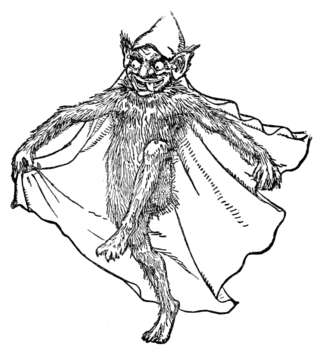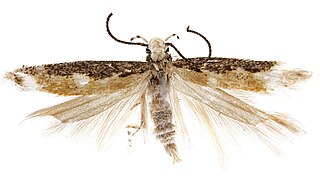
In geometry, a cube is a three-dimensional solid object bounded by six square faces, facets, or sides, with three meeting at each vertex. Viewed from a corner, it is a hexagon and its net is usually depicted as a cross.

A language family is a group of languages related through descent from a common ancestral language or parental language, called the proto-language of that family. The term "family" reflects the tree model of language origination in historical linguistics, which makes use of a metaphor comparing languages to people in a biological family tree, or in a subsequent modification, to species in a phylogenetic tree of evolutionary taxonomy. Linguists therefore describe the daughter languages within a language family as being genetically related. The divergence of a proto-language into daughter languages typically occurs through geographical separation, with different regional dialects of the proto-language spoken by different speech communities undergoing different language changes and thus becoming distinct languages from each other.

A statute is a formal written enactment of a legislative body, a stage in the process of legislation. Typically, statutes command or prohibit something, or declare policy. Statutes are laws made by legislative bodies; they are distinguished from case law or precedent, which is decided by courts, regulations issued by government agencies, and oral or customary law. Statutes may originate with the legislative body of a country, state or province, county, or municipality.

Substance abuse, also known as drug abuse, is the use of a drug in amounts or by methods that are harmful to the individual or others. It is a form of substance-related disorder. Differing definitions of drug abuse are used in public health, medical, and criminal justice contexts. In some cases, criminal or anti-social behavior occurs when the person is under the influence of a drug, and long-term personality changes in individuals may also occur. In addition to possible physical, social, and psychological harm, the use of some drugs may also lead to criminal penalties, although these vary widely depending on the local jurisdiction.
An ancestor, also known as a forefather, fore-elder, or a forebear, is a parent or (recursively) the parent of an antecedent. Ancestor is "any person from whom one is descended. In law, the person from whom an estate has been inherited."

Aquarius (♒︎) is the eleventh astrological sign in the zodiac, originating from the constellation Aquarius. Under the tropical zodiac, the Sun is in the Aquarius sign between about January 20 and February 18. Aquarius is one of the three air signs, alongside Gemini and Libra. The ruling planets of Aquarius are Saturn, and Uranus in modern astrology. It is a fixed Air Sign. The opposite sign of Aquarius is Leo.
J, or j, is the tenth letter of the Latin alphabet, used in the modern English alphabet, the alphabets of other western European languages and others worldwide. Its usual name in English is jay, with a now-uncommon variant jy.

Gracillariidae is an important family of insects in the order Lepidoptera and the principal family of leaf miners that includes several economic, horticultural or recently invasive pest species such as the horse-chestnut leaf miner, Cameraria ohridella.
Schneidereria is a genus of moth in the family Gelechiidae.

Érôme is a commune in the Drôme department in the Auvergne-Rhône-Alpes region in southeastern France.

A goblin is a small, grotesque, monstrous creature that appears in the folklore of multiple European cultures. First attested in stories from the Middle Ages, they are ascribed conflicting abilities, temperaments, and appearances depending on the story and country of origin, ranging from mischievous household spirits to malicious, bestial thieves. They often have magical abilities similar to a fairy or demon, such as the ability to shapeshift.
Kermania is a genus of moths belonging to the family Tineidae.

Gelechiinae is a subfamily of moths in the family Gelechiidae. It was described by Henry Tibbats Stainton in 1854.
Schneidereria pistaciicola is a moth of the family Gelechiidae. It is found in Tajikistan, Uzbekistan, Turkmenistan, Iran and Iraq.
Schneidereria platyphracta is a moth of the family Gelechiidae. It is found in southern India.
John Stuart Noyes is a Welsh entomologist.








